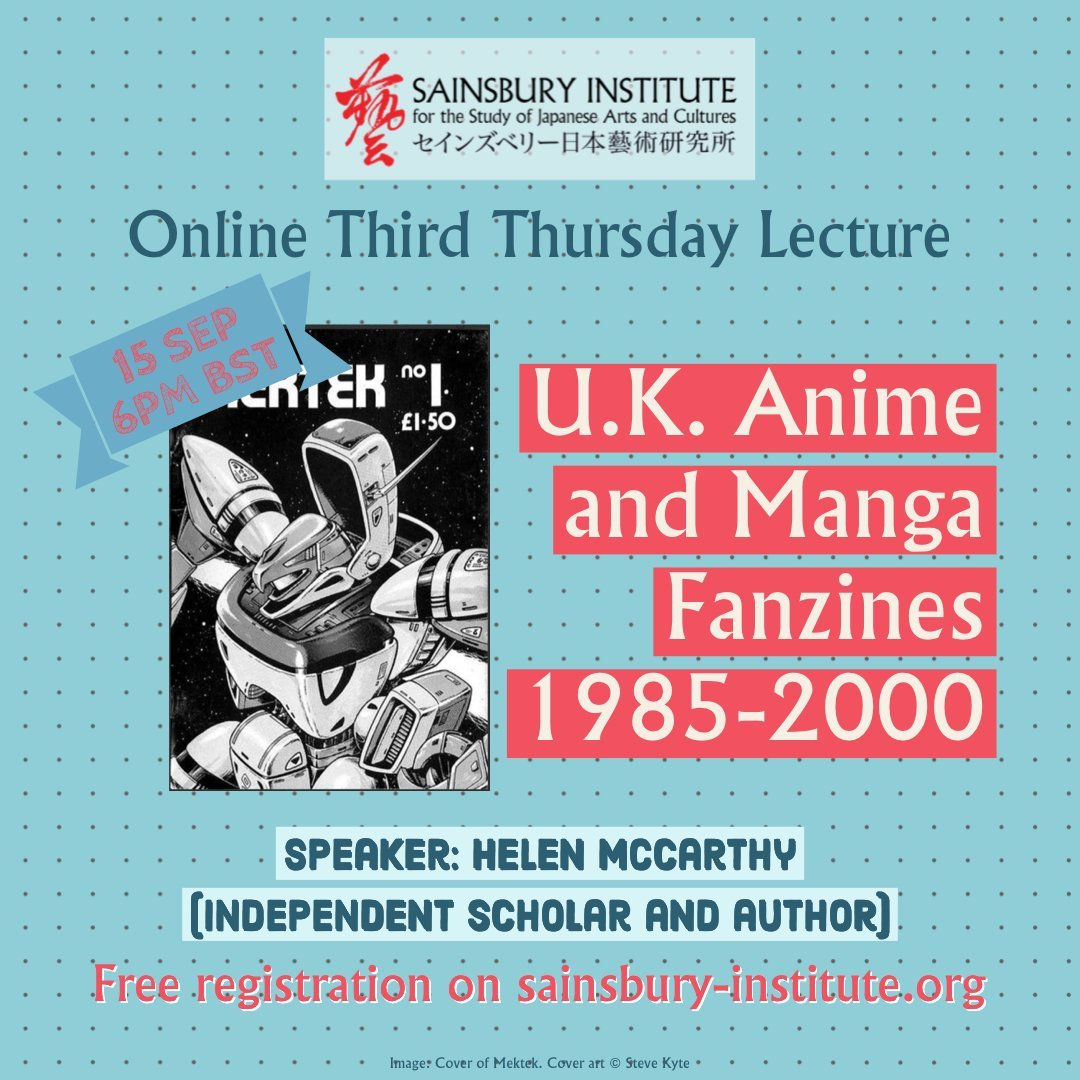Third Thursday Lecture: ‘U.K. Anime and Manga Fanzines 1985-2000’ by Helen McCarthy (2022年9月15日)
The September Third Thursday Lecture was by independant manga and anime scholar Helen McCarthy (author of many books including The Anime Encyclopedia). Introduced by Matsuba Ryoko and with opening remarks from Dr. Eugenia Bogdovia-Kummer, to welcome the attendees back to the first talk of the new academic year.
Dr. Matsuba introduced Helen, highlighting her long history as a part of UK fandom beginning with the first anime magazine, as well as highlighting her involvement with the British Museum’s 2019 Manga Exhibition.
Helen began by explaining her study began in the eighties, before the internet and when scholars were forced to rely on their memories, as opposed to a digital archive and the mass adaption of the internet. Like myself, Helen literally lived through the period in which she is studying, as well as witnessing the rise of anime and manga, its temporary disappearance from the British fandom space, before reappearing and firmly entenching itself in the early 2000s.
She began by highlighting some of the archives in use, such as the works of specialist scholars like Leah Holmes and John A. Lent. Then she focused on the first Asian films to get western releases in the 1950s, 60s and 70s, as well as explaining that many British audiences assemed they were seeing American-made films as they were only exposed to dubbed versions.
Children’s television was made up of dubs, be they taken from French or American adaptions, with examples such as Battle of the Planets or Ulyssees 31 and Mysterious Cities of Gold. In the eighties, due to toy imports and the popularity of anime on British television, these series gained traction within certain fandom sub-genres, like sci fi fans, gamers or model kit enthusiasts. However, up until this point, there was no word for this fandom, until Robotech in 1986 (an amalgam of three anime series produced for American television).
She covered the rise of independent fanzines, prior to the internet, and explained how gaming shops would stock fanzines on a sale or return basis. This then expanded to the video game fans, as well as focusing on Japan and manga and anime-related gaming. This included Helen’s own newsletter/fanzine AnimeUK.
She also discussed the important link between the early anime fanzines and conventions, which allowed people to sell their fanzines to several hundred people, easily making back their investment as well as recruiting new writers and artists, and building a bigger community of like-minded fans.
She also mentioned the importance of specific shops, such as Asiyah Shoten in Colindale, London, or the Japan Centre. Later anime and manga became available in wider sci fi shops like Forbidden Planet. Moving on, Helen focused on the first Anime Fanzine as well as the rise of British-made manga art and doujinshi. She also looked specifically as female-specific fanzines and the rise of those run by women for women and the point where fanzines intersected with pro publishing, as well as citing the career of Laura Watton who transitioned from amateur artist to professional, publishing fan art but eventually graduating to a pro career.
Concluding her talk, Helen reminded the audience that she and scholars were in a race against time to document paper-based materials as well as racing against the internet.
At the end of the talk, there was a short Q and A with questions asked about interactions between different countries (such as the issue between VHS tape formats in the UK, Europe and America). As well as how to preserve such archives and resources digitally for the time when paper degrades and such important examples of fandom are lost.
The full video can be viewed below:
Next month's Third Thursday Lecture will be taking place on 20th October 2022.

